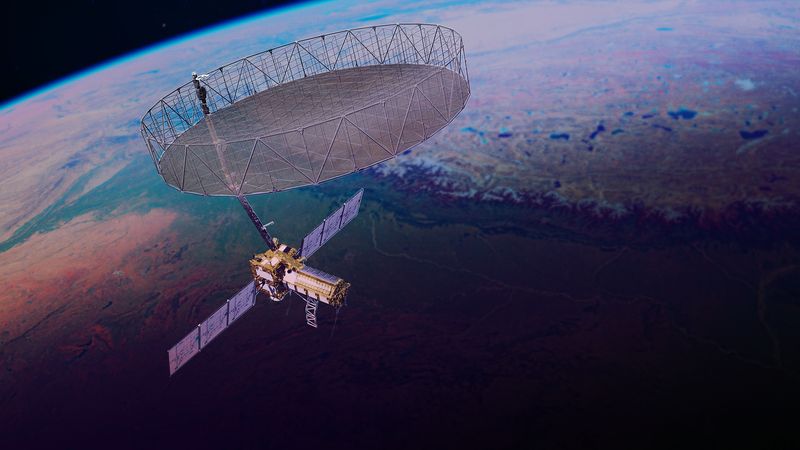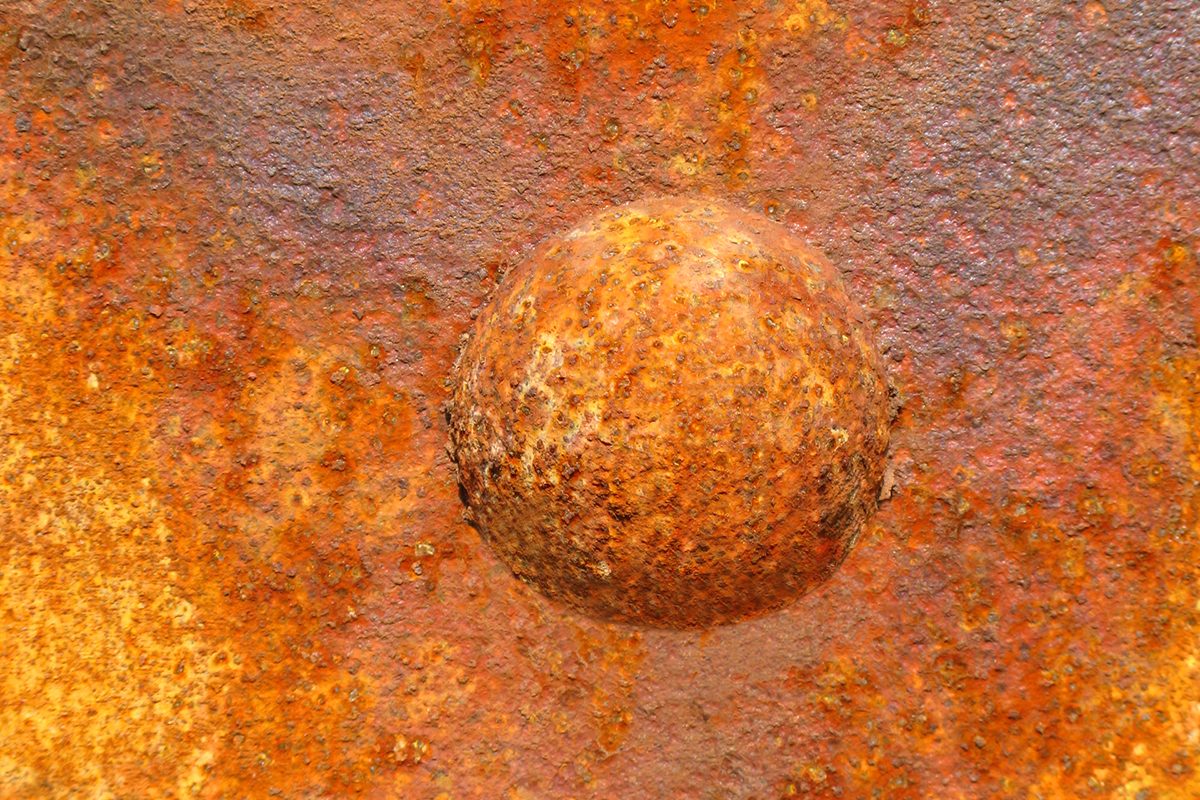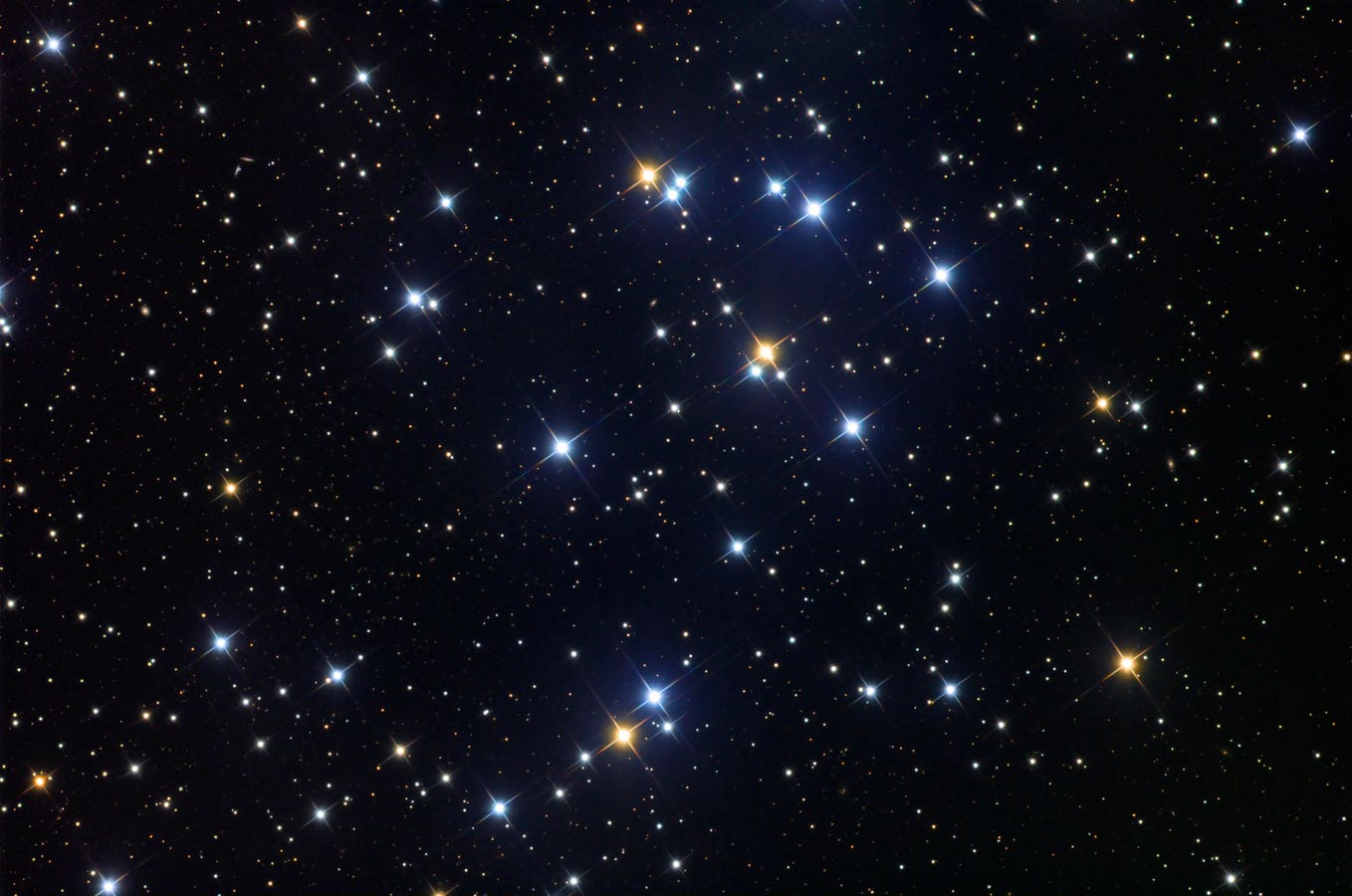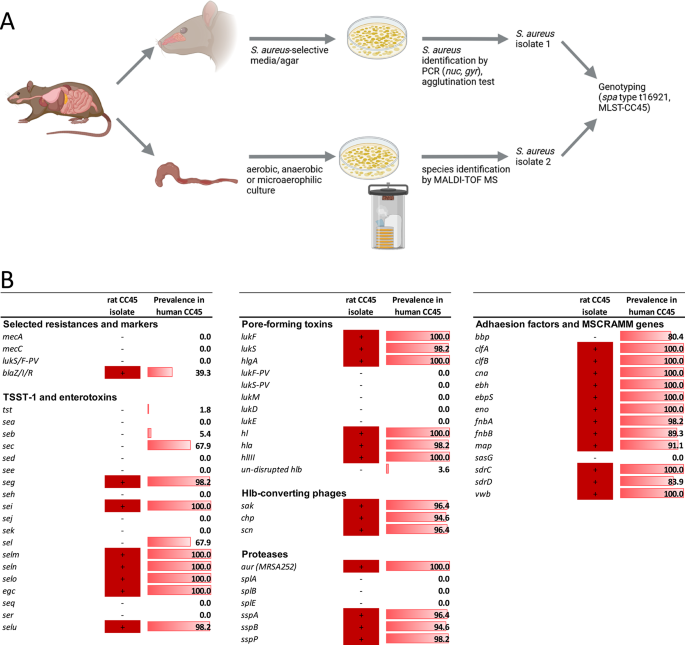Sample collection, dissection and species identification
All methods were carried out in accordance with relevant national and international guidelines and regulations. The removal of the stowaway rat from the airplane follows the regulations given by the International Air Transport Association (IATA) and the World Health Organization (WHO; World Health Organization 2015). According to the American Veterinary Medical Association (AVMA), Guidelines for the Euthanasia of Animals (2020), the employed euthanasia method for the stowaway rat is consistent with the commonly accepted norms of veterinary best practice.
On March 24 in 2017, a rodent was spotted on an airplane from Miami (Florida, USA) to Berlin (Germany) that started its journey in Dubai (UAE). In accordance with international regulations, the aviation authority grounded the airplane at Berlin-Tegel airport. After internal fumigation of the whole airplane with CO2 gas, the rat (H17/01) was located (with the help of a hunting dog) and collected for further investigations. The rodent capture and subsequent investigation workflows are shown in Figure S1.
The animal was frozen and sent to the Friedrich-Loeffler-Institut (FLI), Greifswald-Insel Riems, for necropsy and coordination of pathogen screening. The frozen carcass was thawed at 4 °C and dissected in a biosafety level 3 containment laboratory, with corresponding hygiene measures for the personnel, following a standard protocol, i.e. samples were taken from the heart, lung, chest cavity fluid (CCF), brain, liver, spleen, kidney, trachea, tongue, nose, ear, intestine, feces and the tail tip, then stored at -20 °C. Weight, sex, body and tail lengths were documented during dissection.
The rat species was determined by cytochrome b gene sequencing, as previously described25. Additionally, the entire cytochrome b gene and the whole mitochondrial genome of the rat was extracted from HTS datasets via reference mapping and phylogenetically analyzed (see below).
Microbial isolation, cultivation and pathogen characterization
To demonstrate reproducibility, two cultivation trials were performed for bacterial and fungal organisms at different institutions (FLI and University Medical Center Göttingen (UMG)). In a first trial, cultivation of fecal samples was initiated with a bacteriological plate set consisting of cattle blood Columbia agar plates (Sifin, Berlin, Germany) under aerobic and anaerobic incubation conditions, as well as an aerobic incubation on a Gassner plate (Water blue Metachrome yellow agar according to Gassner, modified, Sifin), all at 37 °C. For Salmonella exclusion diagnostics, Rappaport medium (Rappaport-Vassiliadis soy peptone (RVS) broth, Oxoid, Wesel, Germany), and an XLD (xylose lysin desoxycholat agar (XLD agar), Carl Roth, Karlsruhe, Germany) plate were used.
In a second trial, rat fecal samples were incubated in three different atmospheres: (I) Aerobic conditions, at 37 °C: Columbia agar supplemented with 5% sheep blood (Becton Dickinson GmbH, Heidelberg, Germany), Salmonella Shigella agar (Becton Dickinson GmbH), MacConkey agar no. 3 (Thermo Fisher Scientific Inc., Waltham, MA, USA), Sabouraud dextrose agar (Thermo Fisher Scientific Inc.), Chapman/Mannitol salt agar (Becton Dickinson GmbH), and Yersinia selective agar (Becton Dickinson GmbH), (II) Microaerophilic (CampyGen sachets, Thermo Scientific Oxoid) or capnophilic (BD BBL™ CO2 generators, Becton Dickinson GmbH) conditions at 37 °C: Campylosel agar (bioMérieux, Nürtingen, Germany) and Mueller Hinton Chocolate agar (Becton Dickinson GmbH), (III) Anaerobic conditions (BD BBL GasPak™ Plus, Becton Dickinson GmbH) for 2 to 14 days at 37 °C: chromID™ C. difficile agar (bioMérieux, Nürtingen, Germany), Schaedler agar with vitamin K1 and 5% sheep blood (Becton Dickinson GmbH), and Schaedler kanamycin-vancomycin agar with 5% sheep blood (Becton Dickinson GmbH).
For detection of Acinetobacter baumannii, tracheal sample material was suspended in 3 mL of mineral medium26 supplemented with 0.1% acetate as the sole source of carbon and energy, and incubated at 37 °C with constant shaking27. After zero, five, and 24 h, respectively, 100 µL of the suspension were spread onto Acinetobacter selective medium (CHROMagar, La Plaine St-Denis, France; without CHROMagar multidrug-resistant supplement) and incubated for 24 h at 37 °C.
Isolation and characterization of Staphylococcus aureus
As illustrated in Fig. 1, S. aureus was isolated from the homogenized rat nose in a culture-based approach, as previously reported28. Furthermore, S. aureus was isolated from rat intestine content (feces) by streaking a pea-sized amount of the feces sample onto a Columbia sheep blood agar plate using the quadrant streaking technique. The plate was then incubated overnight under aerobic conditions at 37 °C.
S. aureus identity was confirmed with a colony multiplex-PCR for the S. aureus gyrase gene and an S. aureus-specific latex agglutination test (Staph Xtra Latex kit, ProLex, Richmond Hill, ON, Canada), as previously reported28.
Spa genotyping and multilocus sequence typing (MLST) were performed as previously described29,30. Virulence and resistance genes were detected with the StaphID DNA microarray (Alere Technologies GmbH, Jena, Germany)28,31. The mecC gene encoding a methicillin resistance gene product was detected by PCR, as previously described32. Human nasal clonal complex (CC) 45 isolates (n = 56), which were obtained in the population-based study SHIP-TREND-1 between 2016 and 201933 (approval number BB 39/08 by the Ethics Committee at the University Medicine Greifswald, Germany) by culture-based approaches as previously reported34, were used for the comparison of samples in our study.
Whole-genome sequencing, genome reconstruction and annotation, and phylogenetic analysis of Staphylococcus aureus isolates
Whole-genome sequencing (WGS) was conducted following an established protocol35. In brief, genomic DNA was extracted from both cecum and nasal isolates, and subjected to initial paired-end (2 × 150 base pairs, bp) next generation sequencing using an Illumina MiSeq platform. Long-read sequencing was subsequently performed on the Oxford Nanopore Technologies (ONT) platform and combined with the Illumina data for genomic reconstruction. For this, long-read sequences were assembled using the flye software (v2.9.2-b1786)36. Next, short-read polishing of the assemblies was performed via the HyPo package (v1.0.3; https://github.com/kensung-lab/hypo). Species-specific annotation was subsequently conducted through Bakta (v1.10.0)37. MLST was performed using mlst (v2.23.0) (https://github.com/tseemann/mlst). Circular genomes were visualized using GenoVi (v0.4.3)38. Single nucleotide polymorphisms (SNP) between both isolates were assessed using snippy (v4.6.0) (https://github.com/tseemann/snippy). Plasmid sequences were further investigated via PlasmidFinder (v2.1)39.
In order to assess the phylogenetic relationship of the isolates within the context of publicly available data, a total of 1,689 genomes assigned to sequence type 45 (ST45) were retrieved from Pathogenwatch (dated 2024-11-16) (https://pathogen.watch/). When available, metadata regarding geographical and temporal distribution were also included. The genome collection was annotated analogously to the sequenced isolates, and both were utilized for further population study. The population structure of the sample collection was investigated through phylogenetic reconstruction of a maximum-likelihood tree. A gene-by-gene approach was selected to first establish a shared set of conserved (“core”) genes based on the annotated bacterial assemblies in combination with the roary software (v3.13.0)40. Using this approach, a total of 1,528 conserved genes were identified, which were present in at least 99% of the strains (protein sequence similarity ≥ 95%, sequence coverage ≥ 90%). This was followed by gene-wise alignments using the MAFFT software (v7.520)41, and subsequent concatenation of the alleles per sample. The resulting alignment was then utilized to infer a phylogeny through RAxML-NG (v1.2.0)42 using a General Time Reversible (GTR) model and gamma correction for rate variation among sites. Finally, iTOL (v6.8.1)43 was used to visualize the isolates within the context of the available genomes of the corresponding CC. Average nucleotide identity (ANI) values were computed between the isolates and the genome collection through fastANI (v1.34)44. The presence of mecA was assessed through ABRicate (v1.0.1) (https://github.com/tseemann/abricate) using the National Center for Biotechnology Information (NCBI) antimicrobial resistance (AMR) database (dated 2025-01-14) with default settings (minimum coverage and identity ≥ 80%).
Nucleic acid extraction and RT-PCR and PCR investigations
For pathogen specific nucleic acid detection, standard protocols for RNA and DNA extraction were used (Table S1). The extracted nucleic acids were stored at − 80 °C until further use.
Generic and pathogen-specific conventional and real-time RT-PCR and PCR investigations for 20 viruses, ten bacteria and one endoparasite followed established standard protocols (Table S1). For the detection of polyoma and papilloma viruses, enrichment of potential circular viral DNA, in the background of linear host DNA, was performed via rolling circle amplification (RCA) using the TempliPhi RCA kit (GE Healthcare, Piscataway, NJ, USA), as previously described45.
The species identification of the yeast, Cutaneotrichosporon mucoides, was conducted via 18S ribosomal RNA (rRNA) gene sequencing using a previously published protocol46.
Matrix-assisted laser desorption/ionisation time-of-flight mass spectrometry (MALDI-TOF MS) identification of bacterial and fungal species
The species of morphologically distinct colonies were identified using the Bruker Biotyper MALDI-TOF MS system (Bruker Daltonics GmbH & Co. KG, Bremen, Germany) using the ethanol/formic acid extraction method following the recommended standard procedure47. Thereafter, one µL of the supernatant was spotted onto polished steel MALDI target plates. The air-dried whole cell extracts were overlaid with 2 µL of a saturated solution of α-cyano-4-hydroxycinnamic acid in 50% acetonitrile / 2.5% trifluoroacetic acid and dried again at ambient temperature. Spectra were acquired with an Autoflex III and Ultraflextreme mass spectrometer (Bruker) in the linear positive mode, in the mass range of 2,000–20,000 Da. The instrument was externally calibrated in the mass range between 3,637.8 and 16,952.3 Da using the Bacterial Test Standard (BTS) calibrant (Bruker Daltonics, Bremen, Germany) before measurement. Samples were identified using the MALDI Biotyper software (version 3.1) together with the Bruker reference library (database release 2017). Results with MALDI Biotyper identification scores greater than 2.000 were deemed sufficient for species identification48,49,50,51. For the mass spectrometric species identification of fungi, the established method for bacteria was expanded through an extended direct transfer (eDT) approach. In this process, after applying the sample to the MALDI target plate, an on-target lysis (OTL) was performed using one µL of 70% formic acid. Following the evaporation of the formic acid, the matrix solution was applied.
Metagenomics analyses
Ion Torrent S5 compatible libraries of liver (L2208), spleen (L2209), lung (L2210), feces (L2211), CCF (L2212), brain (L2213), and kidney (L2214) were prepared according to Wylezich et al. 201852. Sequencing was performed on an Ion Torrent platform (either PGM or S5XL) using a suitable chip with a mean read length of 400 bp. Metagenomic analyses were conducted by the use of the RIEMS pipeline53. In addition to RIEMS, DIAMOND was used to screen for additional picobirnavirus (PBV) hits54. The PBV consensus sequences were determined by an iterative assembly and mapping approach through the Genome Sequencer software suite (v3.0; Roche), after extraction of the PBV reads from the datasets using RIEMS and DIAMOND. Nucleotide sequences were in-silico translated into protein sequences with EMBOSS version 6.3.155. For comparison, two metagenome datasets originating from Norway rat feces in Berlin, Germany, from the Sequence Read Archive (SRR1438008, library Mu/10/1772; SRR1438014, library Mu/10/1805) were used for viral genome assembly, because of the high number of PBV reads identified by Sachsenröder et al. 201418. PBV reads were identified in the datasets using DIAMOND, extracted and assembled using SPAdes (version 3.13.1)56.
Prokaryotic and eukaryotic suspected taxa, according to the RIEMS results protocols, were verified via reference mapping (Genome Sequencer software suite, versions 2.6; Roche) using small subunit rRNA sequences as described57. Afterwards, datasets were again mapped against the obtained contigs of the nearly complete 16S/18S rRNA gene sequences using different identity thresholds (-mi 95, 98, 100). The following sequences were used as references: the bacteria Acinetobacter baumannii strain ATCC 19606T (NR_117620), Anaplasma phagocytophilum strain Webster (NR_044762), Bartonella grahamii (HG726044), Bartonella henselae strain Houston-1 (NR_074335.2), Borrelia burgdorferi strain G2 (M60967), Clostridioides difficile ATCC 9689/DSM 1296 (NR_112172), Leptospira ainlahdjerensis strain 201903070 (NR_181724), Metamycoplasma/ Mycoplasma arthritidis strain PG6 T (M24580.2), Mycoplasmopsis pulmonis strain PG34 (NR_041744), Rickettsia japonica YH (NR_074459.2), Rodentibacter pneumotropicus strain NCTC 8141 (NR_118763), Streptobacillus moniliformis strain DSM 12112T (NR_074449), the fungi Cystobasidium laryngis (AB126649) and Trichosporon mucoides (AB001763.2), and the protists Babesia microti strain RI (XR_002459986) and Goussia bayae isolate Potomac (MH758783).
Bioinformatic and phylogenetic analyses
For phylogenetic analysis of PBV sequences, we used the amino acid sequence of the RNA-dependent RNA polymerase (RdRp) encoded by the segment 2 according to Yinda et al. (2018)58. Sequence alignments were conducted with MAFFT59, as implemented in Geneious Prime 10.2.3 (Biomatters, Auckland, New Zealand). A phylogenetic maximum-likelihood tree was constructed using RAxML 8.2.1160, implemented in Geneious Prime 10.2.3 using default settings and 100 bootstrap replications.
The complete mitochondrial genome of the rat was extracted from HTS datasets (L2208, L2210, L2211, L2213, L2214) using NC_012374 (Rattus rattus) as reference sequence. The obtained sequence was aligned with mitochondrial sequences of the genus Rattus, retrieved from GenBank. A maximum-likelihood phylogenetic tree was constructed using PhyML version 3.061 using the Generalized Time Reversible (GTR) nucleotide substitution model with a gamma distribution and a proportion of invariable sites, and 1,000 bootstrap replications within the Geneious Prime 10.2.3 software package. The best-fit nucleotide substitution model was determined by J Model Test262. In parallel, a Bayesian analysis was performed in MrBayes version 3.2.663 for 50 million generations, sampled every 5,000 generations and the first 25% were discarded as burn-in.
Multiplex serology
The multiplex serology “rat panel” included rat parvoviruses (Kilham rat virus, Toolan´s H-1 virus and rat minute virus, species Protoparvovirus rodent 1; rat parvovirus, species Protoparvovirus rodent 2), Sendai virus (species Respirovirus muris), rat coronavirus (species Betacoronavirus muris), pneumonia virus of mice (species Murine orthopneumovirus), mouse adenovirus type 1 (species Mastadenovirus encephalomyelitidis), cowpox virus (species Orthopoxvirus cowpox), orthohantaviruses including Seoul orthohantavirus (species Orthohantavirus seoulense), reovirus type 3 (species Orthoreovirus mammalis), rat hepatitis E virus (species Rocahepevirus ratti), rat rotavirus (species Rotavirus betagastroenteritidis), Streptobacillus moniliformis, Rodentibacter spp., Mycoplasma pulmonis and Mycoplasma arthritidis. Except for the detection of antibodies against the bacteria mentioned above, the multiplex serology was based on a glutathione-S-transferase (GST) capture immunosorbent assay in combination with the fluorescent bead technology from Luminex Corp. (Austin, TX, USA). Viral antigens were expressed as GST-tagged fusion proteins and affinity-purified directly on glutathione-casein-coupled polystyrene beads with distinct embedded fluorescent dyes (SeroMap; Luminex Corp.), as previously described64. In contrast, bacteria were cultured, lysed and membrane proteins were extracted, before they were directly coupled to polystyrene beads. The general set-up and protocol of the multiplex serology was described by Schmidt et al. 201765. The Luminex analyzer BioPlex200 (BioRad Laboratories GmbH, Munich, Germany) was used to distinguish between the bead sets, and consequently the bound antigen, and to quantify the amount of bound serum antibody using a secondary antibody (biotinylated goat anti-rat IgM/IgG, Jackson ImmunoResearch Laboratories, Inc., West Grove, PA, USA; diluted 1:1,000) and a fluorescent reporter conjugate (streptavidin-R-phycoerythrin). Final antigen-specific median fluorescence intensity (MFI) values were measured for at least 75 beads per bead set, and sample and net values were calculated by subtracting the individual bead background values resulting from a serum-free reaction and from a bead-set loaded with GST-tag only. Samples were defined as positive if the net MFI values were above the calculated cut-off to achieve 98% specificity for seropositivity to the individual antigens on the basis of the receiver operating characteristics (ROC) during the validation process.









